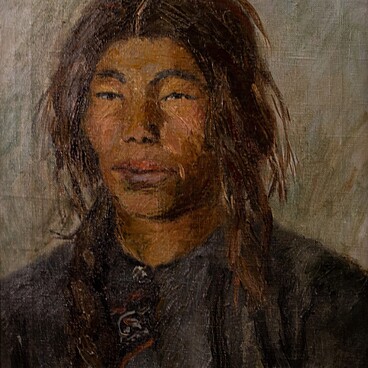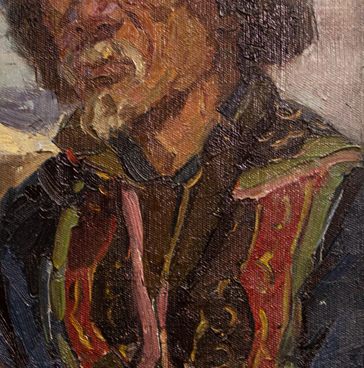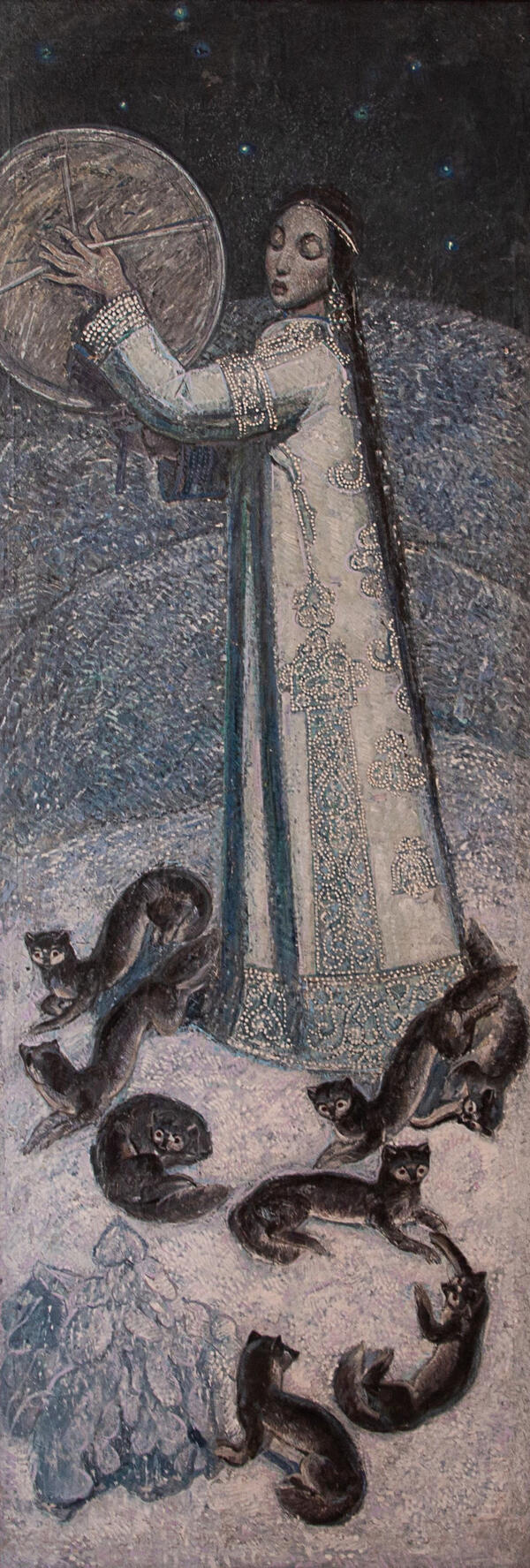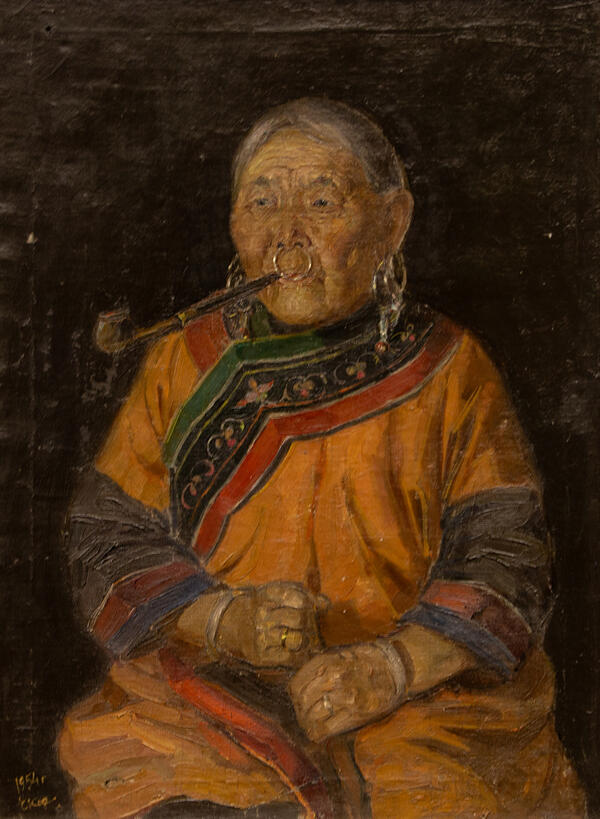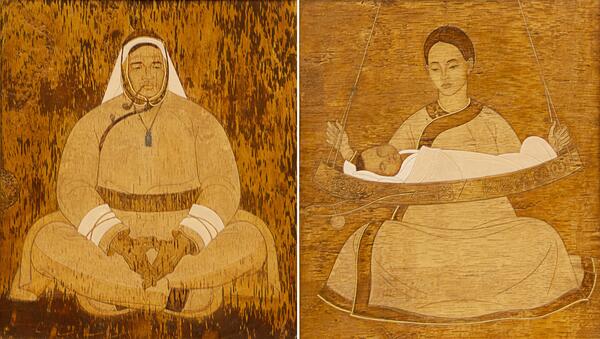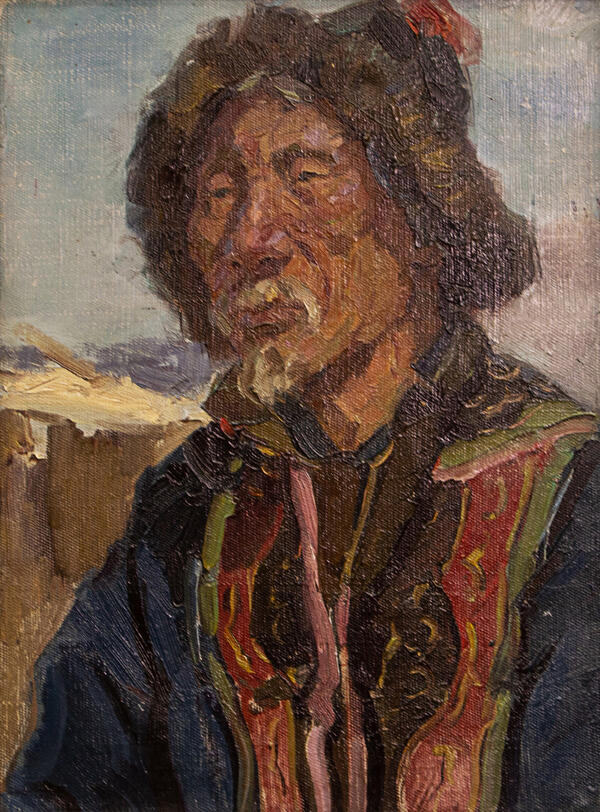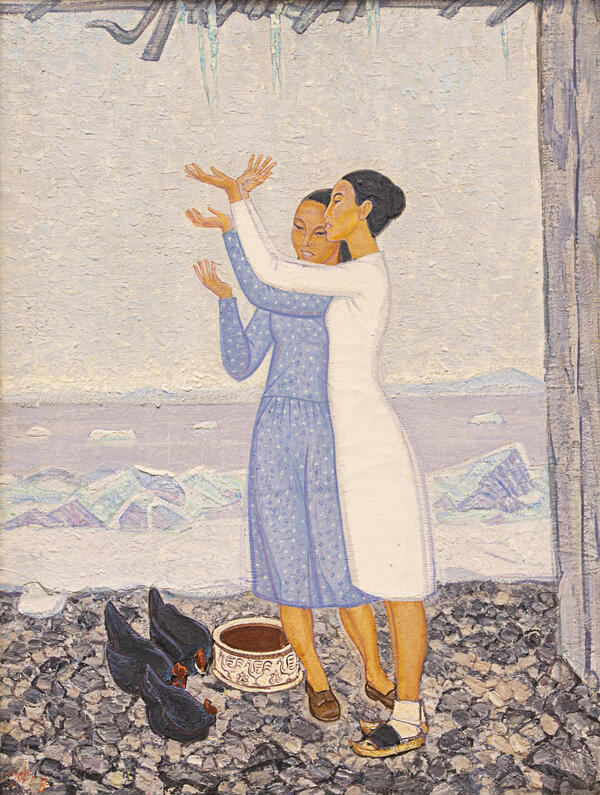The artist and philosopher Yevgeny Vasilyevich Korolenko divided his works into four periods: Nanai, symbolic, tribal and Slavic. Although they differ in subject matter and painting techniques, they all have a lot in common on a deeper level.
The painter used to recall how in the late years of his career he became interested in “painting pictures of the life of peoples in the Amur Region” and studying the local art traditions. The Nanai people were eager to reveal to Yevgeny Korolenko the secrets of their ancient crafts, the meaning of symbols and many other things. Korolenko was especially surprised to find out that these people, that lived at the same time as him, “have preserved their own symbols, which were established a long time ago.” The strong spiritual connection between their generations prompted the artist to reflect on the cultural background of his own nation. Over time, he explored this subject in depth and was then ready to work on his Slavic period.
The theme of childhood and motherhood has also evolved, finding its way from the Nanai period to the symbolic one. In his art history analysis of the triptych “My Land”, Pavel Petrovich Popelsky elaborated on the role of images of children,
The painter used to recall how in the late years of his career he became interested in “painting pictures of the life of peoples in the Amur Region” and studying the local art traditions. The Nanai people were eager to reveal to Yevgeny Korolenko the secrets of their ancient crafts, the meaning of symbols and many other things. Korolenko was especially surprised to find out that these people, that lived at the same time as him, “have preserved their own symbols, which were established a long time ago.” The strong spiritual connection between their generations prompted the artist to reflect on the cultural background of his own nation. Over time, he explored this subject in depth and was then ready to work on his Slavic period.
The theme of childhood and motherhood has also evolved, finding its way from the Nanai period to the symbolic one. In his art history analysis of the triptych “My Land”, Pavel Petrovich Popelsky elaborated on the role of images of children,

